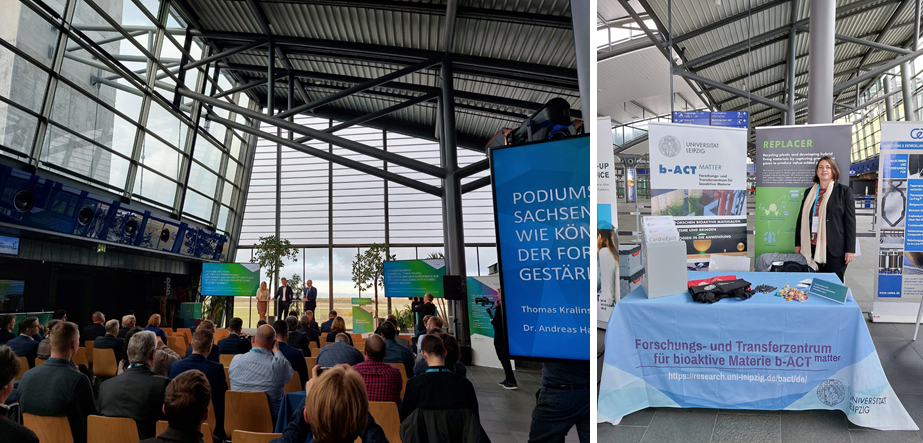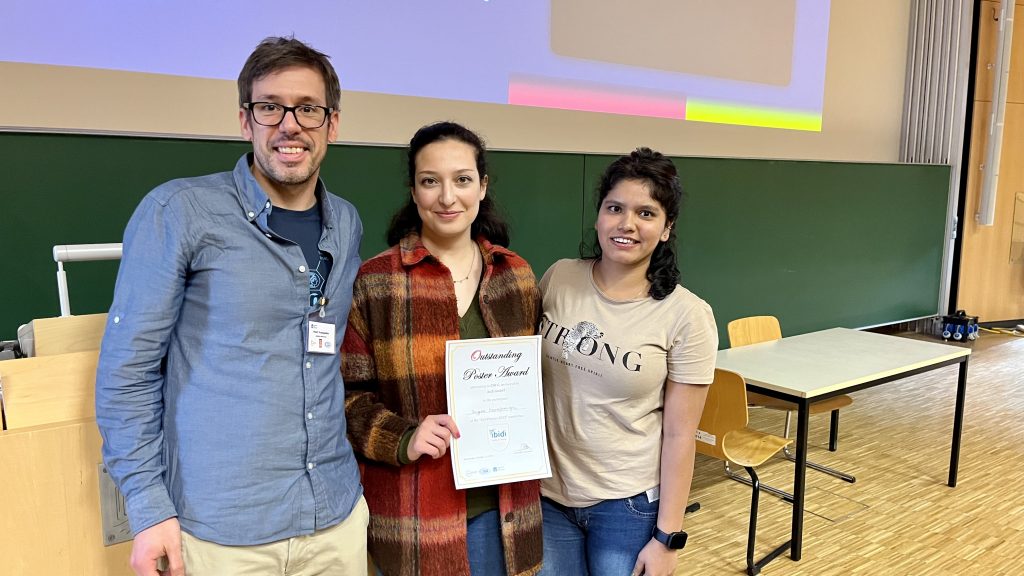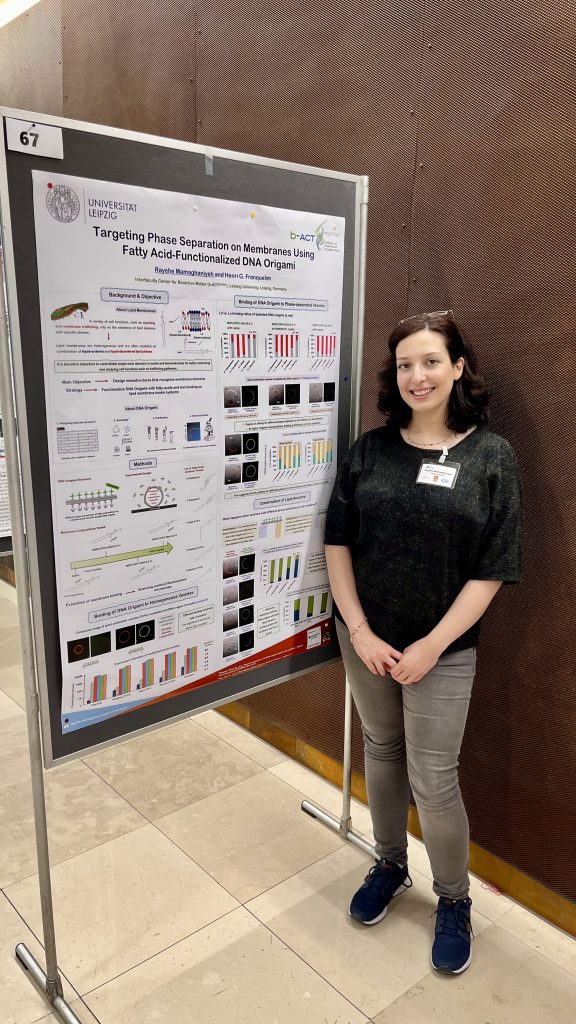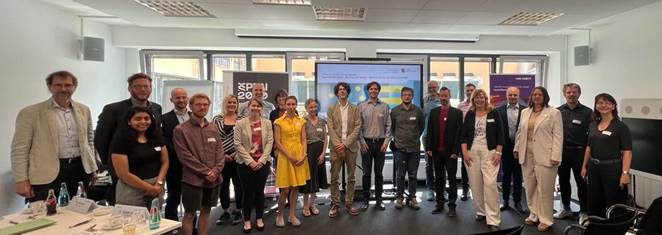As part of the #Circular_economy_in_focus! event, 18 representatives from Saxon research institutions presented their technologies for a sustainable circular economy. b-ACT^matter was there with the topics #DNA_Origami for novel biosensors, living hybrid systems / #photobioreactors for climate-neutral production of proteins for animal feed and polymers and enzymatic #plastic_recycling. The projects will be shown in schools as part of a poster exhibition “Circular economy in Saxony from the perspective of research and science” organised by the #Sächsische_Agentur_für_Strukturentwicklung together with the Saxon_State_Ministry_for_Regional_Development (SMR). In this way, we can hopefully get the next generation excited about technologies for a circular economy and give them a bit of courage that the challenges of climate change can be overcome.
https://sas-sachsen.de/expo-circular/
Thank you very much for the good discussions and the new opportunities for cooperation!
Thomas Wendland, Niels Modler, Alexander Stahr, Robert Kupfer, Anja Blüher, Marco Zichner, Annika Eisenschmidt
To the article on LinkedIn: here




